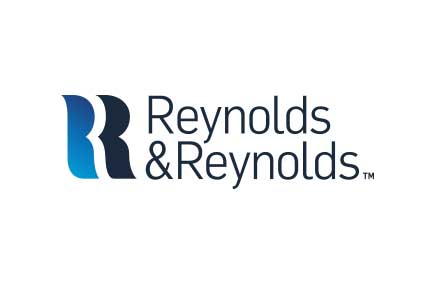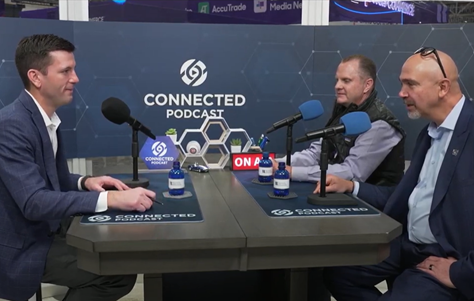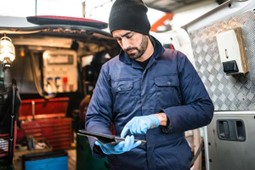Fixed Operations Best Practices

Article Highlights:
- How to operate fixed ops efficiently during this time.
- Best practices for navigating the industry’s current state.
Welcome to Reynolds and Reynolds’ video podcast, Connected. This series allows all of us to stay connected and work together to navigate through the industry’s current state both now and in the days and weeks ahead.
In this episode, Jason Sideris, vice president of fixed operations product planning at Reynolds and Reynolds, discusses how fixed operations has been affected by COVID-19.
Greg Uland: Hello, I’m Greg Uland, marketing director at Reynolds and Reynolds, and this is Connected. The podcast with best practices and ideas to help navigate what is happening in the automotive industry and the world today. As the COVID-19 virus continues to change our world and how we live and work daily, this podcast discusses ways to continue operating in this unprecedented social environment. On today’s episode, we have with us Jason Sideris, vice president of fixed operations product planning at Reynolds and Reynolds. Jason, thanks so much for joining us. How are you today?
Jason Sideris: Doing well, Greg. Happy to be here. Certainly recognizing that, like everyone else, we’re dealing with the challenges that are facing each of us. But overall, doing well.
GU: Good, glad to hear it. You know, fixed operations is a huge focus right now for a lot of dealers. It’s the only part of their business that’s operating fully. So let’s start talking today with scheduling service. What are some tips for customers to handle scheduling service really at a distance?
JS: Yeah, that’s a good question, Greg. For many, many years phone was our primary method of doing that, and still continues to be such. But as we think about the phone, we want to look for ways that we can over-communicate to our customers. And what do I mean by that? Well, many of us, by means of our phone systems, we may be able to change the messaging, the communication, going out to customers explaining to them things such as new write up or drop off processes that we’ve put in place because of COVID-19. Or maybe changes to our business hours. What about the opportunity to promote pickup and delivery? Those are all things that are important to our customers. But one other thing we can also focus on is looking for alternate methods of scheduling appointments such as online scheduling.
GU: Yeah, for sure. And Jason, historically, online scheduling hasn’t been used a ton by consumers and a lot of times it’s because it’s not easy for them. So what are some tips that you might have or things you’re hearing from dealerships, just to make it simpler and easier for customers to schedule online?
JS: You’re absolutely correct, Greg. I mean, the reality is the percentage of customers that are scheduling online is still relatively small, but there are things that we can do to keep improving that. Probably one of the biggest things is keeping it simple. Oftentimes, as we look at the data, customers that are going online to schedule appointments, they tend to defect from the process based upon the complexity of what we have in the system. So maybe looking for ways to simplify that, focusing on things such as scheduled maintenance, maintenance or repairs, limiting the number of choices so that when the customer goes to schedule their appointment, they can provide those additional details. Maybe either on screen or once they have the opportunity to come into the dealership.
GU: That’s great. It’s really, really good information. Shifting gears a little bit, can we talk a little about multipoint inspections? And, you know, that’s something obviously that’s part of the service process. But what are some options for handling presenting the findings in a multipoint safely and again, kind of from a distance?
JS: When we think about how multipoint inspections have evolved over the years, we started out with a paper process. Now the majority of dealers are using electronic tools to capture the information on what the vehicle needs. And this is a really important way to communicate to the customer things such as safety concerns related to their vehicle or needed repairs. So multiple inspections have just become a way of life for us. But as we think about communicating this information to our customers, we have to be thinking about their well-being. Right now, there’s a lot of things on their mind. Their vehicle is a concern of theirs, but there are other things that are pressing on their mind as well. So taking a personal interest in their well-being is very important regardless of the method of communication.
Today, again, we mentioned the phone. Phone is still a way that many of us communicate with our customers and it will be that way for a long time. But one of the challenges that we face with phones is customers are concerned. They’re getting a lot of spam calls. They may not be picking up the phone when we call them, so now we end up playing phone tag.
Another issue might be that they’re sharing information with us and there could be an opportunity for transposition errors. Some of the information they share we’ve got to now put into the system and we may make errors on our side as well. So again, while phone continues to be an important way of communication, there may be some other ways we can look at that may be more efficient and be more effective.
Email has become a way that we communicate with customers. It, too, has some challenges. One of the biggest things is while it may be an effective way of communicating, it’s not time sensitive. And what do I mean by that? Well when we think about email, oftentimes customers respond to an email in hours or days versus seconds or minutes, and that allows to then think about another method of communication, text messaging. Studies show that this is the most preferred method of communication for many of our customers. And we talk about that days versus minutes. Well, the average customer response with text message is less than three minutes. When we think about the vehicle being up on the lift, our goal is to get a response back from the customer so that we can address those concerns in a very effective and efficient method.
So focusing on capturing approval from our customers, for example, have they opted into our texting program? So whether we’re communicating with the customer via phone, email or in-person, we want to make sure that we explain this option for customers and ensure that we’re getting them to opt into our text messages.
One other thing I’d like to just mention whether it’s communicating in an electronic format such as text or email, there are a lot of ways that we can communicate via online approvals. For example, sharing pictures, videos, etc. with the customer, educating the customer as to the concern related to vehicle. As we think about multi-point inspection, maybe the most basic method would be to scan the inspection form in and email that to the customer. Or if we have a system in place that provides online access, we can allow them to approve that work through that means as well. Probably the most important thing, though, Greg, is that we be clear and that we provide what is the issue and why is it important for them to do that at this time.
GU: Yeah, that can be tough when you’re used to communicating it verbally as a service advisor and now you have to do it in writing or online. So, you know, just being conscious of that and probably just making sure that your advisors are competent and confident in delivering that message, whether it’s verbal or in writing or online or whatever the method is. Really, really good points there. Jason another really high touch area in the service department is paying for services. So what are some ways to safely and really, I guess respectfully for your customers, handle accepting payments?
JS: That’s a good question. You know, social distancing makes this very difficult, right. But there are methods to be able to do this in a convenient and secure way. One would be online payment. You know, it tends to be safer because the customer is not having to pass a credit card back and forth and ultimately with regards to social distancing, because really they’re not in our near proximity. However, many customers over the years have actually accepted credit card numbers over the phone. This is not a secure method of making payments. So utilizing programs that you may already have in place that allow you to send information to customers so they can pay online can be very effective.
GU: Yeah, that’s great. That’s great. Obviously there’s still going to be customers paying in the store. Any options or additional tips or things that we’ve seen for payments in stores and keeping that as safe as possible?
JS: You know, I still find it somewhat interesting that oftentimes many of our employees aren’t even aware of the fact of the capabilities of the systems that we already have in place. Recently I went to a drive thru and I had to hand them my credit card. And I cringed when I did that. They took it, swiped it, and handed it back to me. Later that day, I had another buying experience, I was in a store and when I went to hand the credit card, they wouldn’t even allow me to hand it to them, in fact, the individual let me know that I can simply tap my credit card on the payment terminal. I didn’t have to insert it and I didn’t have to swipe it. So many of the systems now allow for that. So are we taking advantage of that near-field communication solutions such as Apple Pay, Samsung pay, Google Pay, or even cards that are equipped with near-field communication chips built right into them that do not require us to take the credit card or the customer to even insert or swipe the credit card. Probably again, the most important thing is this: are we educating our employees of all of the options? And then also are we sharing that information with our customers? Keeping our customers up to date on these different options really shows that we have their best interests in mind. Some other things that we can do is we can place signs around the dealership or maybe put information on our website or through our social media, letting our customers know that we offer contactless payment methods.
GU: Yeah, those are all good points and good ideas. And to your point, a lot of, if not most payment processors, have this available. So just check it and see what you have available to you and then educate your customers on what’s possible. That’s a good point. Jason, it’s been great talking with you. I really appreciate your time. While we have you here, is there anything else that you want to touch on before we sign off for today?
JS: Yeah, Greg. Certainly we’re all in this together, you know? And on top of that, we will all come out of this better prepared as we move forward. So appreciate you Greg, and this opportunity.
GU: All right, great. Well, Jason, thanks so much for your time. Really appreciate it. This has been Connected. Stay safe and we’ll see you on our next episode.
Continue to tune in often to see new episodes on best practices and tips for navigating the automotive industry during this unprecedented time.
Related Articles:
Earlier this year, I had the privilege of diving into a conversation with Ed Roberts, COO of Bozard Ford, and what struck me was how…
Key drop-off is one of the first impressions a customer has of your service drive. Both you and your customer want it to be as…
We live in an era where a simple tap on your phone can bring almost anything to your doorstep within hours. According to Statista, in…
Here in the North, we face the dreaded winter months. They’re full of stuffy noses, sore throats, and endless coughs. Although sicknesses like the flu…



















